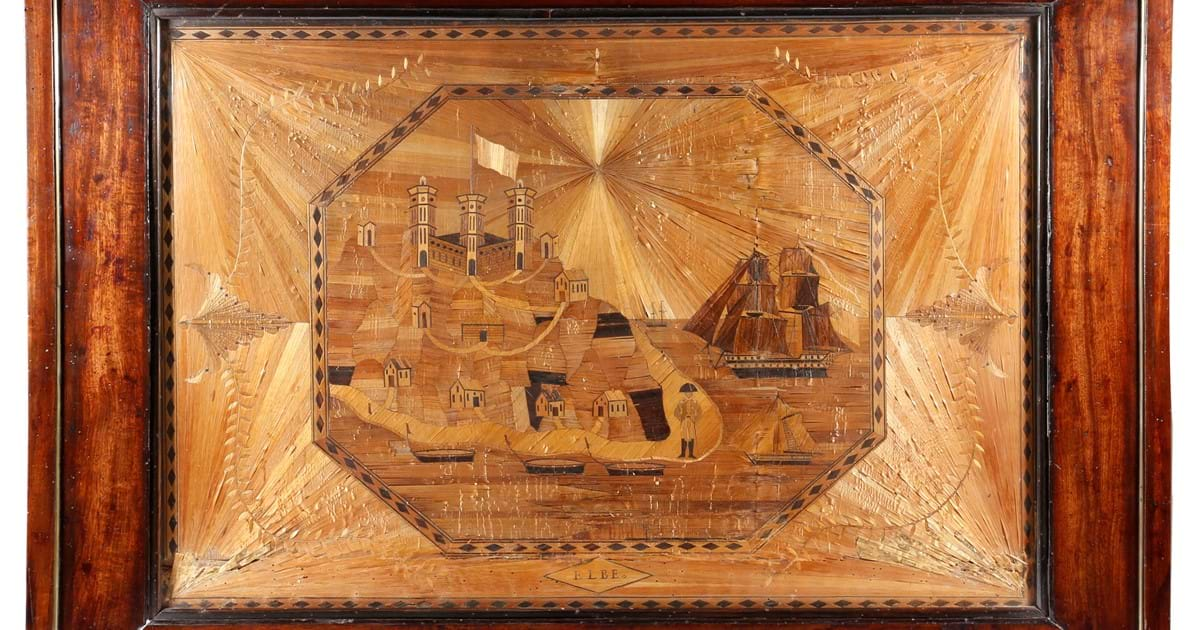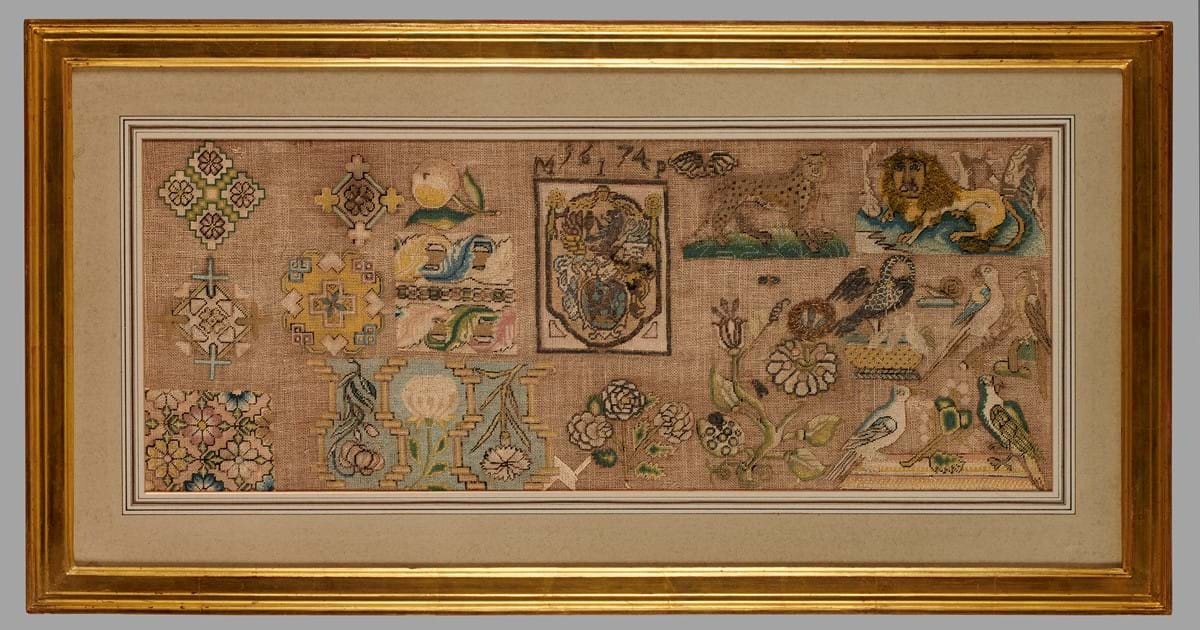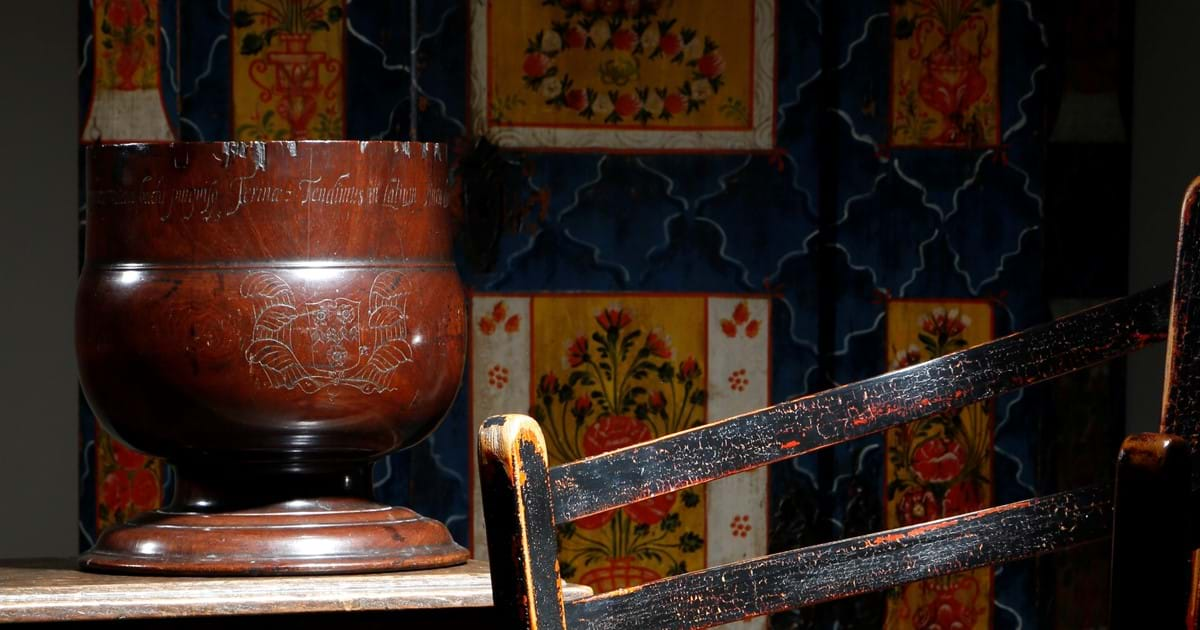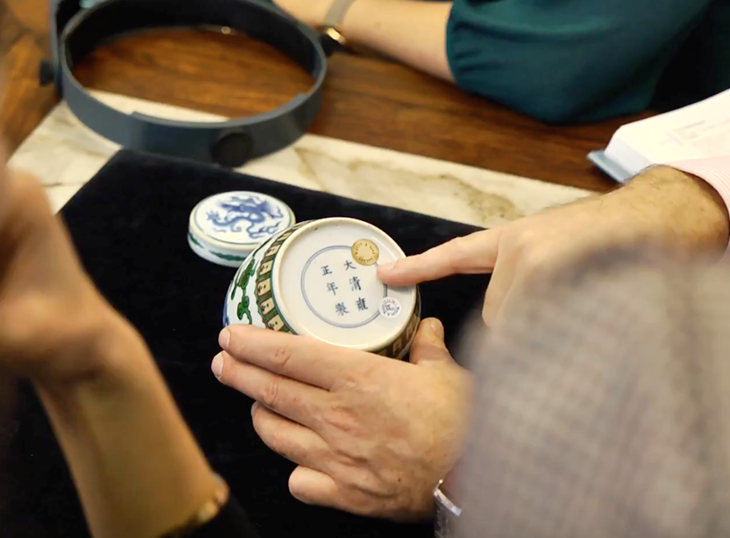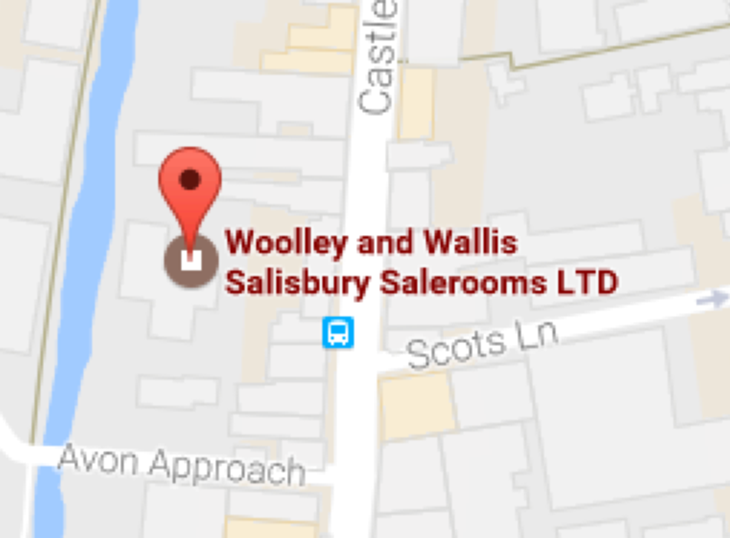Napoleonic Artworks to Early Needlework
25th March 2019The days were long, the circumstances were miserable and they longed for home, but while French prisoners of war were confined in England during the Napoleonic Wars they were allowed to supplement their rations by selling handmade ornaments, boxes and games.
In conditions so harsh that one prison reported the deaths of 1700 inmates between 1797 and 1814, prisoners used what few materials were available to them to create intricate and highly collectable works of art, and a variety of these feature in our Furniture, works of Art and Clocks sale on 3rd April.
Straw-work was a typical skill among the imprisoned soldiers, with stationery, jewellery and tobacco boxes with intricate designs produced in coloured straw. The more detailed designs sometimes drew their inspiration from current events, such as lot 210 that depicts Napoleon on the island of Elba. The prisoner was clearly sympathetic to Napoleon’s exiled plight, as the scene appears to show the blighted ruler escaping, and includes a British ship named ‘Undaunted’.
Bone carvings were also common, and were used not just for ornamentation, but to create games that allowed inmates to while away the time. The sale features three sets of dominoes, and a games box containing dominoes, dice and markers (click here).
All the prisoner of war items were allowed to be sold to earn their creators money to supplement their rations and provide them with a means for when the war finally ended. They were collected at the time by, among others, the Cecil family at Burghley House, but remain surprisingly affordable today, with estimates starting at £100.
Of a similar intricacy, but produced under very different circumstances, the sale also includes a private collection of early needlework that dates from the reigns of Charles II through to Queen Anne. Many of the pieces were purchased by the vendor from Mallets and feature a variety of designs from animals and birds, through to Biblical scenes including the Finding of Moses (lot 77) and the Sacrifice of Isaac (lot 75). The early date and high quality of the needleworks is reflected in their estimates which range between £1,000 and £3,000, while a Charles II spot sampler dated 1674 carries an estimate of £8,000 – 12,000 (lot 72).
Elsewhere in the sale, a private collection of taxidermy contains a number of high quality specimens of birds by renowned Victorian taxidermists include T E Gunn of Norwich, Hutchings of Aberystwyth, T M Williams of London and William Macleay of Inverness (details here), while a Charles II lignum vitae wassail bowl dated 1681 (lot 43) is expected to draw significant interest.

